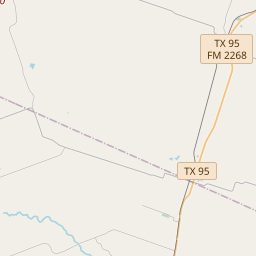Mount Arie (Mount Ararat) Missionary Baptist Church







Bartlett was a small farming community in 1898. Black American laborers arrived each fall for the cotton harvest. Thomas Sanders and Nelson Secret and their families called the Reverend F. E. Garrett of Temple to help them establish Mount Arie Missionary Baptist Church in June 1898. Among the first families of the church were those of the Reverend W. M. Muckleroy, Wallace Dotray and C. A. Harris. The small congregation originally met on the Bell County side of Bartlett, but in 1910 had grown enough to prompt a move to Brook Street in Williamson County.
The years 1921 and 1933 were lean ones. The church building was moved to Bowie Street in 1953 because of unstable land on its Brook Street site. The structure was modernized in the 1960s and 1970s. Membership increased dramatically, and the congregation began to integrate after 1977.
The eighth decade of the church's history brought new developments. The congregation moved into a new brick facility in 1980, the same year the church name was changed to Mount Ararat Missionary Baptist Church after it was discovered that Mount Arie was an abbreviation for the name of the mountain on which Noah's Ark landed as depicted in the Old Testament.
The Mount Ararat Missionary Baptist Church celebrated its centennial in June 1998. The congregation supports widespread missionary and outreach programs. The membership and its diversity continue to increase as the congregation carries on in the traditions of its founders. (1999)
As one of the most visible programs of the Texas Historical Commission (THC), historical markers commemorate diverse topics in Texas history, including: the history and architecture of houses, commercial and public buildings, religious congregations, and military sites; events that changed the course of local and state history; and individuals who have made lasting contributions to the state, community organizations, and businesses.
The state of Texas was once an independent country known as the Republic of Texas. It gained independence from Mexico in 1836 and was a separate nation until it was annexed by the United States in 1845.
The region was first settled by European pioneers in the mid-19th century. The establishment of Fort Tumlinson in 1839 provided protection to settlers, and the population grew steadily with the arrival of more immigrants in search of new opportunities. In 1848, the county was officially organized and named after Robert McAlpin Williamson, a judge and soldier in the Republic of Texas.
During the Civil War, Williamson County faced significant challenges. Many residents joined the Confederate Army, and the county became a hotbed of conflict due to its location on the frontier between Union and Confederate territories. After the war, the area was able to rebuild and experienced a period of economic growth, driven by agriculture, cattle ranching, and the emergence of small towns and rural communities.
In the 20th century, Williamson County continued to develop and adapt to changing times. The discovery of oil in the early 1900s brought economic prosperity to the region, and the county experienced a boom in population and infrastructure. Today, Williamson County is a thriving part of the greater Austin metropolitan area, known for its strong economy, vibrant communities, and commitment to preserving its historical roots.
Williamson County Timeline
This timeline provides a condensed summary of the historical journey of Williamson County, Texas.
- 1804 - The area that is now Williamson County is settled by Native American tribes, including the Tonkawa, Lipan Apache, and Comanche.
- 1836 - Texas gains independence from Mexico.
- 1838 - The Texas legislature establishes Williamson County, named after Robert McAlpin Williamson, a leader in the fight for Texas independence.
- 1848 - The Mexican-American War ends and the Treaty of Guadalupe Hidalgo is signed, officially establishing the Rio Grande as the boundary between Texas and Mexico.
- 1850 - The population of the county reaches 1,027.
- 1876 - The Texas State Capitol building is completed in Austin, which becomes the seat of government for Williamson County.
- 1881 - The International-Great Northern Railroad reaches Georgetown, bringing economic growth and development to the county.
- 1907 - The county courthouse, located in Georgetown, is completed.
- 1930s - The Great Depression hits Williamson County, causing a decline in the local economy.
- 1950s - The county experiences a period of growth and prosperity, with the population increasing significantly.
- 1990s - Development and suburbanization accelerate in Williamson County, with the county becoming one of the fastest-growing areas in the United States.